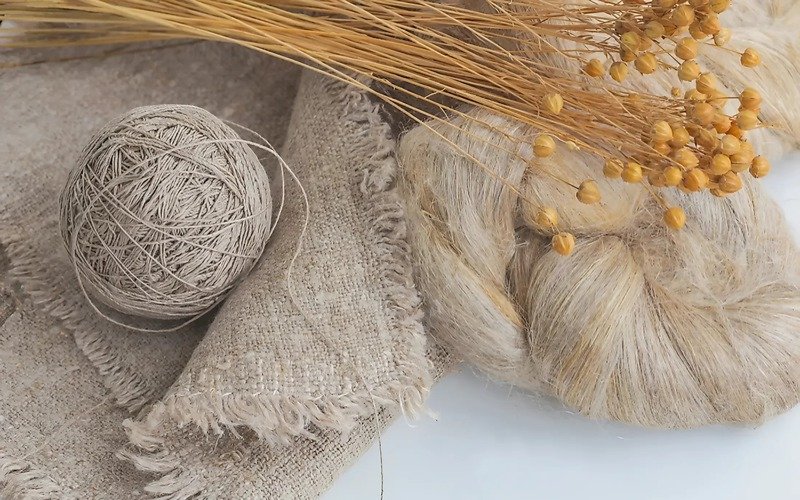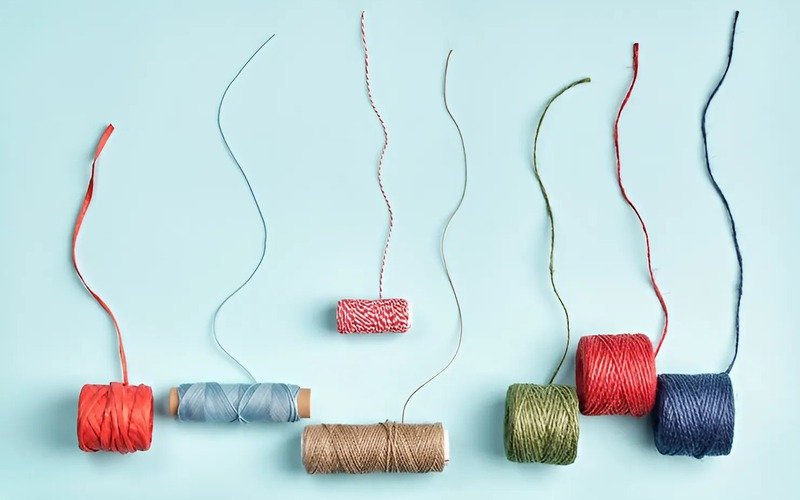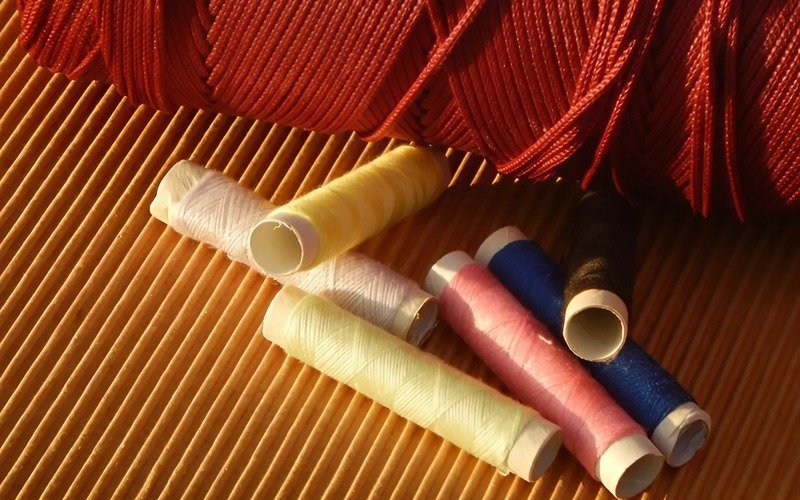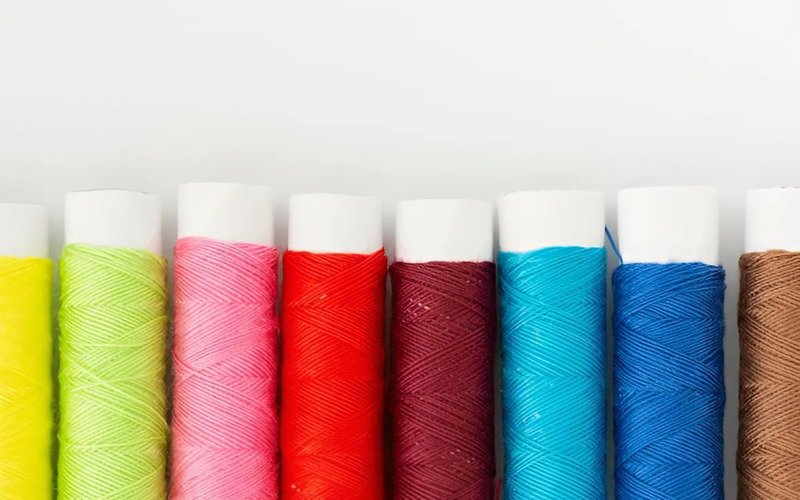What Is Sewing Thread: Understanding Types And Making Smart Choices
Every stitch in a sewing project relies on one crucial component: the thread. While it might seem like a minor detail, selecting the right sewing thread can dramatically impact the quality, appearance, and longevity of your creations. Using the wrong type can lead to frustrating puckers, broken seams, and a finished item that doesn’t stand the test of time.
This comprehensive guide will delve into the world of sewing thread, exploring what it’s made from, the different types available, and how to choose the ideal partner for your fabric and project. Get ready to elevate your sewing skills by mastering this fundamental notion.
1. Introduction: What exactly is sewing thread?
1.1 What is sewing thread? A simple definition
Think of sewing thread as a very fine, strong yarn or string made especially for sewing. Its main job is to join pieces of fabric together when you stitch them. Sometimes, this special yarn is also used to create pretty patterns or decorative stitches on fabric. It’s a basic but very important tool for anyone who sews.
1.2 Why is understanding sewing thread important?
Understanding a little about sewing thread can make a big difference in your sewing projects. Choosing a good thread helps your creations look more professional and last much longer. It’s an essential part of garment construction materials and general crafting notions.
If you use the wrong type, you might face problems like:
- Broken stitches: The thread might snap while you’re sewing or after the item is finished.
- Puckered fabric: The fabric might gather or bunch up along the seam, making it look messy.
Using the right thread ensures strong sewing and a beautiful finish, making your efforts worthwhile.

2. The main ingredients: What is sewing thread made from?
It’s helpful to know what your sewing thread is made of. Different materials give thread different qualities. This knowledge helps you pick the best sewing supplies and textile materials for your project.
2.1 Natural fibers: Threads from nature
These threads come from things found in nature, like plants or animals. Many people like natural thread because it feels traditional and works well with natural fabrics. These natural fibers offer unique characteristics for various sewing needs.
Cotton thread: Cotton thread comes from the soft, fluffy fibers of the cotton plant.
Qualities:
- Feel: It’s usually soft and comfortable against the skin.
- Dyeing: Cotton thread takes color very well, so you can find it in many shades.
- Stretch: It doesn’t stretch much. This makes it great for natural fabrics like cotton or linen because they act in similar ways. For example, if they shrink in the wash, they tend to shrink about the same amount.
- Thickness: You can find thin cotton thread for delicate work or thicker cotton thread for everyday sewing.
Common uses:
- Best for sewing clothes made from 100% cotton or linen.
- Great for making quilts, especially if you want a traditional look and feel. This makes it a popular quilting thread.
- Good for projects you plan to dye later because the thread will take the dye too.
So, what is cotton sewing thread good for? It’s excellent for projects using natural plant-based fabrics where minimal stretch and good dye absorption are needed.
Silk thread: Silk thread is made from the fine, strong fibers of silkworm cocoons.
Qualities: It’s very strong for how thin it is, has a beautiful natural shine, feels smooth, and is flexible.
Common uses:
- Perfect for sewing delicate fabrics like silk or fine wool.
- Used for hand embroidery thread to add beautiful details.
- Good for tailoring high-quality clothes requiring fine sewing.
- Sometimes used for stringing beads because it’s strong and smooth.

2.2 Man-made (synthetic) fibers: Strong and versatile threads
These threads are made by people using chemical processes. They often come from materials like plastic. Synthetic thread is popular because it is usually very strong, lasts a long time (good durability), and can often stretch a bit. This man-made thread is often a strong thread choice.
Polyester thread: Polyester thread is made from a type of man-made plastic. It’s a very common polyester thread (product type).
Qualities:
- Strength/durability: It’s very strong and tough, so it doesn’t break easily. Its strength is a key benefit, making polyester sewing thread a durable choice.
- Resistance: It resists shrinking, stretching out of shape, and mildew (getting moldy).
- Stretch/give: It has a little bit of stretch, which is good for sewing knit fabrics because the thread can move with the fabric.
- Smoothness: It’s smooth, so it slides through fabric easily when you sew.
- Availability: You can find it in almost any color and different finishes (shiny or matte).
Common uses:
- Versatility: Polyester thread is a great all-around choice for most sewing projects and fabrics. It’s often what all-purpose thread is made from.
- Fabric types: Especially good for synthetic fabrics (like clothes made of polyester or nylon) and knit fabrics.
- Project examples: Used for making clothes, things for your home like curtains or pillows, outdoor items, and fixing clothes. It’s a strong and durable thread.
What is polyester thread good for? It excels in projects needing strength, some stretch, and resistance to wear, making it ideal for everyday garments, activewear, and items exposed to moisture.
Nylon thread: Nylon thread is another strong, man-made thread.
Qualities: It’s exceptionally strong, doesn’t weigh much, is elastic (stretchy), and resists rubbing and chemicals. It is a very strong sewing thread.
Common uses:
- Best for very strong fabrics like canvas (for bags), denim, leather, and vinyl. It’s a go-to heavy-duty thread.
- Used for making outdoor gear like tents and backpacks, luggage, sports equipment, shoes, and furniture covers (upholstery). This makes it a good outdoor fabric thread.
- Good for things that need a lot of stretch, like swimwear or exercise clothes.

3. More than just material: Other things to know about thread
Besides the material, a few other things affect how thread behaves. Understanding these can help you choose even better.
3.1 Thread “weight” or thickness (simplified)
When people talk about thread weight, they usually mean how thick or thin it is, not how much it weighs on a scale. There are special numbering systems for this (like tex, denier, or ‘wt’), but for starting out, just think of sewing thread sizes as thin thread, medium thread, or thick thread.
- Thick threads: Thicker threads (which might have lower ‘wt’ numbers like 30wt or 40wt) are stronger. You can see the stitches more easily. They are good for heavy fabrics like denim or canvas. They are also used for decorative stitches that you want to show off.
- Medium threads: Medium threads (like a 50wt ‘all-purpose’ thread) are good for most everyday sewing.
- Thin threads: Thinner threads (which might have higher ‘wt’ numbers like 60wt or 80wt) are finer. The stitches are less noticeable. They are good for light, delicate fabrics like silk or thin cotton. They are also used for fine embroidery where you don’t want the thread to be too bulky.
A good rule to remember is: use thicker thread for thicker, heavier fabrics, and thinner thread for thinner, lighter fabrics. Understanding thread thickness helps achieve the best results.
3.2 How thread is made (a very simple look at construction)
The way tiny fibers are twisted together to make thread also affects how it feels and sews. This is about thread construction. Let’s look at a few simple sewing thread types based on how they’re made.
Spun thread
- How it’s made: Spun thread is made by twisting short fibers together to make one long strand. It’s like how yarn for knitting is often made.
- Examples: Most cotton threads are spun. Some polyester threads are made this way too, and they are often called ‘spun poly.’ This spun poly thread can feel a bit like a cotton-like thread.
- Characteristics: Spun thread can sometimes have a slightly fuzzy surface, which means it might produce a little lint (fluff), which means it might produce a little lint (fluff). It’s usually not as shiny as other types. It’s good for general sewing.
Filament thread
- How it’s made: Filament thread is made from very long, continuous strands of fiber. Imagine a strand like a long silk thread or a fishing line. These long strands are twisted together.
- Types (briefly): Sometimes it’s just one strand (this is called monofilament thread, and it can be clear like fishing line). More often, several long strands are twisted together (this is called multifilament).
- Examples: Most polyester filament thread and nylon filament thread you buy for sewing are filament threads. Silk is a natural fiber that is also a filament.
- Characteristics: Filament threads are usually a smooth thread, often a shiny thread, very strong, and don’t produce much lint. The multifilament type is common for everyday sewing.
Core-spun thread
- How it’s made: Core-spun thread is like a combination. It has a strong core (center) made of a filament (usually polyester). Then, this core is wrapped with shorter fibers (often cotton or polyester staple fibers). This is often called poly-core thread.
- Purpose: The idea is to get the best of both worlds: the strength of the polyester core inside, and the feel or sewing performance of the outside fibers. For example, a cotton wrap can make it feel nice and sew well on natural fabrics.
- Characteristics: Core-spun threads are strong, sew smoothly, and are often considered a very good quality all-purpose thread or high-quality sewing thread. They are a strong all-purpose thread.

4. Picking the perfect partner: How to choose the right sewing thread
Now that you know a bit about thread, let’s look at how to choose sewing thread for your project.
4.1. Match your thread to your fabric
The most important tip is to try to match thread to fabric. If you’re sewing cotton fabric, try to use cotton thread. If you’re sewing polyester fabric, use polyester thread. Match the thread fiber to the fabric type.
This is important because threads and fabrics made from similar stuff tend to act the same way. They will stretch (or not stretch) together, and react similarly to washing and ironing. This makes your seam strength better and your seams look neater.
Also, think about how heavy your fabric is. Use thinner thread for light, delicate fabrics and stronger, thicker thread for heavy, sturdy fabrics.
4.2. Think about your project’s needs
Consider how to pick sewing thread based on what your project needs:
Strength: If you’re making something that will get a lot of use or needs to be strong (like bags, kids’ clothes, or work clothes), choose a strong sewing thread. Polyester or nylon threads are good choices.
Stretch: If you’re sewing stretchy fabrics (like T-shirt material, leggings, or swimwear), you need a thread for stretchy fabric that can stretch too. Polyester thread is great for this. Cotton thread might break when the fabric stretches.
Appearance/visibility: Think about whether your stitches will show.
- If they will (like pretty stitches on top of the fabric, or embroidery using decorative stitching thread), pick a color and finish (shiny or not shiny) that you like and that looks good with your fabric.
- If the stitches will be hidden inside, the look is less important, but the color should still try to blend.
Durability: For things that will be outdoors or washed a lot, polyester or nylon threads are good durable thread options because they resist mildew and wear and tear.

4.3. What is “all-purpose thread”?
You’ll often see thread called all-purpose thread. This is usually a medium-thick (often a ’50wt’) all-purpose polyester thread, or sometimes a polyester thread wrapped in cotton (core-spun).
It’s made to work pretty well for many different kinds of sewing projects, like making clothes, simple home items, and basic repairs. It’s a versatile sewing thread. If you’re just starting out and not sure what to get, all-purpose thread is a safe and reliable choice. It’s an excellent beginner sewing thread and easy to find in lots of colors.
4.4. Choosing thread color
Choosing thread color is an important step.
To blend in (for seams inside your project):
- Try to pick a thread color that matches your fabric as closely as possible.
- If you can’t find an exact match, choose a color that is a little bit darker than your fabric. Darker thread usually blends in better than lighter thread.
- If your fabric has a print with many colors, try to match the main color in the print, or the background color.
To stand out (for stitches you want to see, like on pockets or for decoration):
- Choose a contrast thread color that looks nice with your fabric. This is often a decorative thread color.
- Think about the final look you want for your project.
A handy tip we’ve learned over the years is that a medium grey or beige thread can often blend in surprisingly well with many different fabric colors if you don’t have an exact match. It’s a good emergency color to have!

5. What is sewing thread used for? Common examples
So, what is sewing thread used for in everyday life? Here are some common examples:
A. Joining fabric pieces: This is the main job of sewing thread. It’s used for sewing seams that hold pieces of fabric together for clothes, quilts, bags, curtains, soft toys – almost anything made of fabric!
B. Mending and repairs: Thread is used for mending clothes, like fixing torn seams, patching holes, or reattaching a strap on a bag. It helps make your fabric items last longer.
C. Decorative stitching: You can use thread to add pretty patterns or designs on fabric. This includes decorative embroidery (making pictures with thread by hand or machine) or topstitching (visible stitches on edges, like on collars or pockets, for a neat look).
D. Attaching items: Thread is used for attaching buttons, zippers, snaps, and hooks. It’s also used for adding trims like lace or ribbon. Importantly for brands, it’s used for attaching labels and attaching patches.
This is especially true for branded items, where the quality of attachment reflects on the brand itself. For instance, when attaching labels and patches – like the ones Packlove creates – good thread ensures they stay on securely and look great, reflecting the quality of your brand. Using the right thread ensures your custom patches (learn more about our durable Woven Labels or Rubber Labels at Packlove) really last.

6. Your sewing thread questions answered (FAQs)
Here are answers to some common questions about sewing thread.
6.1. What’s the main difference between thread for hand sewing and thread for a sewing machine?
Machine sewing thread is made to be very smooth and strong to go through a sewing machine quickly without breaking. It often comes on big spools. Hand sewing thread can sometimes be a bit thicker or have a special coating (like wax) to stop it from thread tangling and make it easier to put through a needle.
But, many ‘all-purpose’ threads can be used for both hand and machine sewing. But, many ‘all-purpose’ threads are designed to perform well for both hand and machine sewing, taking into account factors like smooth passage through the machine’s mechanisms
6.2. Can I really use any thread for any fabric?
You can often sew most fabrics with most threads, but it’s not always the best idea if you want your project to look good and last long. It’s usually better to match thread type to the thread for fabric type (like cotton thread for cotton fabric, or polyester thread for stretchy or synthetic fabrics).
This helps everything work together well. However, a good quality ‘all-purpose’ polyester thread is a very versatile thread and useful for many projects if you’re just starting out.
6.3. Why does my thread sometimes break when I’m sewing?
Thread breaking can happen for a few reasons, often related to sewing machine problems:
- Old or cheap thread: Thread can get weak over time or if it’s not good quality.
- Wrong needle: If your sewing machine needle is old, dull, bent, or the wrong size or type for your fabric, it can cut or break the thread. These are common needle issues.
- Machine tension is too tight: If the settings on your sewing machine for how tight the thread is pulled (machine tension) are too high.
- Machine threaded wrong: Double-check that your machine is threaded the correct way.
6.4. What is a strong, common thread I can use for most things?
A good quality, medium-thick polyester thread (often called ‘all-purpose’ and around ’50wt’) is a great choice for a strong common thread. Core-spun thread (polyester core with a cotton or polyester wrap) is also very strong and versatile. These are an excellent best all-purpose thread and versatile sewing thread for a wide variety of sewing projects.

6.5 Is it okay to use very old sewing thread?
It’s best to be careful with very old sewing thread. Over time, thread can get dry, weak thread, and break easily, especially if it’s been in the light or collected dust. This affects thread durability. Before using it, give it a good, sharp tug. If it snaps easily, it’s probably not strong enough for a project you care about. It’s better to use new thread for important sewing.
Read more:
So, now you know a bit more about sewing thread! Understanding what it’s made of, how thick it is, and what type it is can help you choose sewing thread that’s best for your sewing.
The right thread not only makes your sewing easier but also helps your finished projects look more beautiful, be stronger, and last longer, leading to better sewing projects. As you do more sewing, don’t be afraid to try different kinds of threads. You’ll learn what you like best and what works for your projects.
We hope this guide helps you on your sewing journey! At Packlove, we believe quality materials make all the difference, whether it’s thread for your seams or the perfect custom label for your brand. If you’re creating products and need high-quality custom labels, tags, or packaging to make them shine, explore what Packlove can offer at mypacklove.com/
Have questions about adding a professional touch to your creations with custom branding? Our Packlove team is here to help! Contact us today.






















